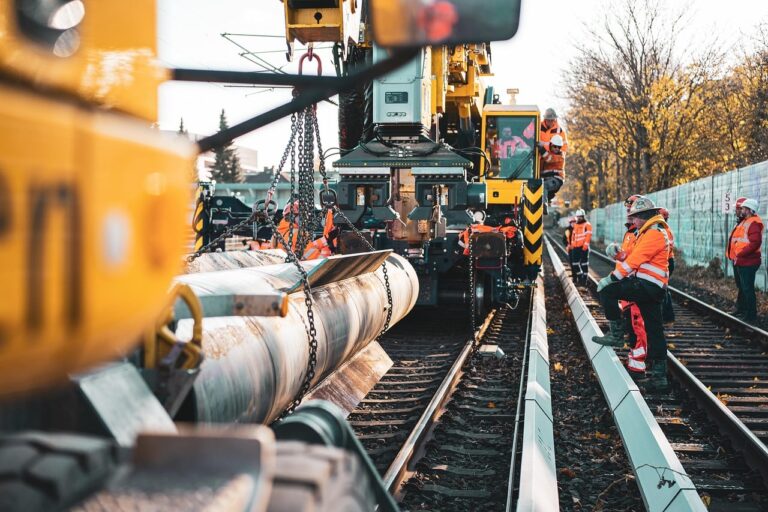High and low frequency noise control solutions
Understanding the different impacts and planning suitable control measures Noise is a constant challenge in any industrial environment. Yet not all noise is created equal! Understanding the difference between high-frequency and low-frequency noise is essential for implementing effective noise control solutions that protect your staff and the environment. What’s the difference between high-frequency noise and…
Understanding the different impacts and planning suitable control measures
Noise is a constant challenge in any industrial environment. Yet not all noise is created equal!
Understanding the difference between high-frequency and low-frequency noise is essential for implementing effective noise control solutions that protect your staff and the environment.
What’s the difference between high-frequency noise and low-frequency noise?
Measured in hertz (Hz), frequency measures the number of times per second that a sound wave repeats itself. Higher frequency sounds, with short sound waves, feature a frequency of 5,000 Hz or higher. High frequency sound waves cannot endure over long distances and are reflected back when they encounter thin objects.
By contrast, low-frequency noise features sound waves with frequencies below 300 Hertz, which are capable of traveling very long distances. Unlike higher frequencies which are mostly received by the ear, low-frequency noise is often felt as vibrations.
| Noise Type | Pitch | Frequency Range | Wavelength | Examples |
| High-Frequency Noise | High-pitched, such as a whistle or machinery screech | Above 2,000 Hz | Shorter wavelengths, easier to block or absorb | Power towels, alarms, squeaky conveyor belts |
| Low-Frequency Noise | Deep, rumbling sound, like a generator hum | Between 20 Hz and 200 Hz | Longer wavelengths, travel further and penetrate barriers easily | Heavy machinery, ventilation systems, engine vibrations |
The impacts of high- and low-frequency noise
Though you may be able to hear the difference between high and low-frequency noise, that’s just the start of how the two types of noise differ.
How noise affects industrial employees
High-frequency noise
Prolonged exposure to high-frequency noise at elevated levels (above 85 dB) can lead to noise-induced hearing loss (NIHL). These sounds are also more irritating, and can cause discomfort, stress, and ear fatigue.
Low-frequency noise
While less immediately harmful to hearing, low-frequency noise is also harder to escape. It can cause physical symptoms like headaches, dizziness, and a feeling of pressure on the ears. The vibrations associated with low-frequency noise can lead to long-term discomfort for employees.
The effects of noise on the environment
High-frequency noise
Localised and often contained within a specific area, this noise is perceived as irritating and disruptive, affecting productivity and communication.
Low-frequency noise
This noise can travel over long distances, causing vibrations in structures and materials. It is harder to block and may impact not just the workplace but the surrounding environment as well.
How to control high-frequency noise
1) Soundproof enclosures
Encasing noisy machinery in acoustic enclosures lined with sound-absorbing materials can effectively contain high-frequency noise. Flexshield uses premium products such as Sonic Access acoustic doors, Sonic System acoustic modular panels, Sonic acoustic curtains, and SonicClear industrial PVC to create enclosures that are built to last.
2) Personal Protective Equipment (PPE)
Provide earplugs or earmuffs for staff working in high-noise zones. Workers should also attend regular training and awareness programs to educate them about the risks associated with noise exposure and the correct usage of protective equipment.
Solutions for controlling low-frequency noise
1) Acoustic insulation
Install Sonic Acoustic Curtains to block low-frequency sound. Studies have demonstrated that these curtains can reduce sound transmission by up to 30 dB (depending on the curtain weight). With the flexibility to seamlessly integrate into various settings, their performance is unmatched in industrial enclosures or construction site fencing.
2) Sonic barriers
The Sonic System acoustic modular panel can help mitigate both high- and low-frequency noise in industrial settings to minimise noise transmission and enhance acoustic comfort. Engineered to meet the highest standards, the modular panels deliver exceptional sound absorption, achieving an impressive NRC rating of 1.10 with the V50 and V100 variants.
General solutions to address both low- and high-frequency noise
- Regular equipment maintenance: Keeping machinery in good condition reduces high-pitched squeals and low-frequency vibrations.
- Noise zoning: Group noisy equipment into specific zones, using acoustic partitions to minimise noise spread.
- Acoustic louvres and doors: Sonic Access acoustic doors and acoustic louvres provide noise control for industrial areas, reducing both high- and low-frequency noise without restricting airflow.
Get expert advice on high and low frequency noise control
Both high- and low-frequency noise can significantly affect your staff’s wellbeing and productivity, as well as the environment around your workplace. By understanding the differences between these types of noise, and implementing targeted control measures, you can create a quieter, safer, and more comfortable working environment.
To explore our range of industrial solutions designed to tackle noise at any frequency, contact Flexshield on 1300 799 969.
Related Stories
-

Flexshield’s big month in industrial noise control – on the road from QLD to WA!
Taking action for hearing health and sustainable water management It’s been a busy month for the Flexshield team, and we’ve covered vast distances from Queensland to New South Wales, Victoria, and Western Australia. It’s been… -

The science behind tailored industrial noise control solutions for your project
7 key considerations for addressing noise pollution for your project When you’re managing noise on a job site, it’s important to understand the science behind industrial noise control and how to apply it effectively. Whether… -

World Hearing Day 2025: protecting workers’ hearing with Flexshield
Why prioritising hearing protection is essential for your workforce Each year on March 3rd, the World Health Organisation (WHO) marks World Hearing Day, raising awareness about hearing loss and promoting actions to protect auditory health….